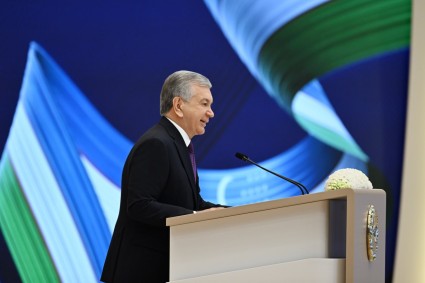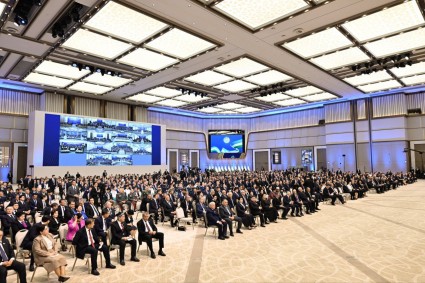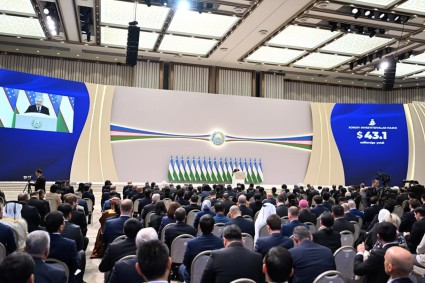In 2019, Uzbekistan made a moderate advancement in efforts to eliminate the worst forms of child labor. The government took active measures to prevent the use of child labor in the cotton harvest, including by introducing criminal penalties for repeat violations of hazardous work prohibitions, doubling the number of labor inspectors, and conducting extensive awareness-raising on child labor laws and penalties for violations, the United States Department for Labor said in a report.
The government also established a new National Commission on Combating Trafficking in Persons and Forced Labor and adopted a new roadmap to combat trafficking in persons and forced labor. However, children in Uzbekistan engage in the worst forms of child labor, including in commercial sexual exploitation. Although the government made meaningful efforts in all relevant areas, laws prohibiting the commercial sexual exploitation of children do not meet international standards. Uzbekistan also has not carried out a national child labor survey to determine the prevalence of child labor in sectors other than cotton production.
Children in Uzbekistan engage in the worst forms of child labor, including commercial sexual exploitation. Uzbekistan has not carried out a national child labor survey to determine the prevalence of child labor in sectors other than cotton production.
Articles 131 and 135 of the Criminal Code of the Republic of Uzbekistan criminalize pimping, procuring, involving, or inducing children into prostitution, and criminalize the actions of those who profit from prostitution involving children. However, no law criminalizes the users (clients) of prostitution involving children. In addition, although Uzbekistan has policies at the national level prohibiting all Uzbek citizens, including children, from joining non-state armed groups, the recruitment of children by such groups is not explicitly punishable by law.
Because the minimum age for work is lower than the compulsory education age, children may be encouraged to leave school before the completion of compulsory education.
In 2019, the upper and lower chambers of Uzbekistan's parliament adopted amendments to the Administrative Code that increased penalties for violation of child labor laws, and amendments to the Criminal Code that established criminal penalties for repeat violations of laws prohibiting hazardous child labor. Parliament also adopted additional amendments to the Criminal Code that introduced criminal penalties for forced labor violations, including official complicity in forced labor. These amendments were approved by the president in January 2020 and entered into force three months later. However, although Article 148(2) of the Criminal Code now establishes criminal penalties for forced labor violations, these only apply to repeat offenders; administrative fines are applied in the first instance. The government also drafted a new law on combating trafficking in persons.
The government has established institutional mechanisms for the enforcement of laws and regulations on child labor. However, gaps exist within the operations of the Ministry of Employment and Labor Relations (MOELR) that may hinder adequate enforcement of their child labor laws.
The government has established policies related to child labor. However, policy gaps exist that hinder efforts to address child labor, including implementation of cotton clusters.
In 2019, the government continued to implement policies aimed at attracting a greater number of voluntary workers to assist with the cotton harvest. These included raising wages for cotton pickers, raising the price offered to farmers for cotton, and continuing to transition to a system of private business partnerships called "clusters" along the cotton value chain (from farm to finished products). Under the cluster model, land concessions are provided by the government to cotton sector enterprises. In some cases, these clusters farm cotton directly, and in others, they enter into contracts with local cotton farmers. Reports indicate that in some regions or districts, only one cluster has been given a land concession, essentially providing that cluster with a monopoly on entering into cotton production contracts with farmers. Some clusters may also have close ties to local administrators. (19,62-64) In such cases, there is limited evidence that farmers may be pressured into entering contracts that have poor terms, such as a low purchase price for cotton or a high price for inputs like seeds and fertilizer. There have also been allegations of clusters that never pay farmers for delivered crops. (63,64) Observers have noted that these practices can mimic the pressures on farmers and officials that historically created high risks for forced labor under the quota system. (19) Some clusters are investing in mechanical harvesting equipment and methods, which reduce the need for manual labor during the harvest. However, in cases in which clusters still need to hire seasonal labor, they can work with MOELR-run Population Employment Facilitation Centers to advertise vacancies and recruit workers. (37) Limited reports suggest that during the 2019 harvest, local officials may have forcibly mobilized pickers to work on cluster-run or cluster-affiliated farms.
During the reporting period, the government adopted a new strategy for agricultural development that includes an action item to end the state's practical involvement in crop production by 2023. Officials clarified that this would include an end to cotton production quotas. In early March 2020, President Mirziyoyev signed a decree formally ending the practice of imposing state production plans in the cotton sector. Under these plans in previous harvests, local and regional officials were held responsible for meeting production targets, which observers reported was a root cause of forced labor and increased the risk of child labor.
In 2019, the government funded and participated in programs that included the goal of eliminating or preventing child labor. However, gaps exist in these social programs, including the adequacy of programs to address the full scope of the problem.
In 2019, the government established 197 new regional centers across the country for rehabilitation of human trafficking victims, including child victims. (51)
Although there are programs to address child labor in the cotton sector, research did not find evidence of programs designed to address child labor in other sectors, such as public works and street work.










